
These days there is a pretty strong emphasis on gluten-free foods. Some people avoid gluten because of celiac disease – and for them, even a little bit of gluten can make them bloated. Other people feel that they are sensitive to gluten, while others avoid it in an attempt to eat healthier.
Gluten itself is a protein that plays a role in how elastic dough is – and the protein is present primarily in wheat and some other grains. Unfortunately, that also means that gluten is present in anything that uses flour and that category covers a whole lot of food.
I’m not going to get into the debate about whether you should be avoiding gluten or not. There are a lot of strongly held opinions out there and that simply isn’t the point of this post. I’m simply trying to highlight a range of foods that are naturally gluten free – to make the struggle in finding good gluten free food that little bit easier.
For meals & desserts, I have a bunch of gluten free recipes you can browse. You can also find naturally gluten free beer, which has been made using alternative grains like sorghum.
After all, we should all be able to find good food, regardless of the restrictions on what we can (or should) eat. Hopefully this list shows that gluten free eating doesn’t have to be as challenging as it first appears.
Naturally Gluten Free Foods, Drinks, and Condiments
Marshmallows

For the vast majority of marshmallow brands and products, marshmallows are indeed gluten free. Indeed, they aren’t made with any ingredients that contain gluten and even variations on the recipe are unlikely to contain gluten.
There is a small risk of cross-contamination from other products that involve gluten, although the risk is relatively minor. Some brands will label their marshmallows as gluten free, but the lack of such a label doesn’t mean that the product contains gluten.
Your best bet is to simply steer clear of any marshmallow brands that specifically state that there is a risk of cross-contamination.
Sushi

Basic sushi doesn’t contain anything to be concerned about in terms of gluten. It certainly helps that sushi isn’t heavily processed, so you don’t have to worry about hidden ingredients as much.
However, you still have to be careful with any ingredients that are added to sushi, such as tempura, wasabi and soy sauce. With soy sauce, you should only choose naturally fermented version of the sauce. With other additions, make sure the product is gluten free before eating it.
Plain Yogurt

Yogurt is a perfect gluten free breakfast food that is naturally yogurt is gluten free, but it can contain additives that have some gluten. Because of this, gluten status varies considerably between one brand and the next.
Most of the time plain yogurt (i.e. non-flavored yogurt) is safe, but even then that isn’t true for all brands. When it comes to yogurt, the best approach is to keep an eye out for the information that brands provide. Most yogurt companies will make it very clear when their brands are gluten free, as this is a selling point for them.
Almond Milk

There are no natural sources of gluten in almond milk and all known commercial brands of almond milk are free from gluten. Likewise, almond milk that you make yourself is going to be gluten free.
However, the flavorings in almond milk may contain gluten. Nevertheless, a number of brands do test their flavored versions of almond milk for gluten and use gluten free labelling where appropriate. So, you should be fine with flavored almond milk if you look out for that.
Cider
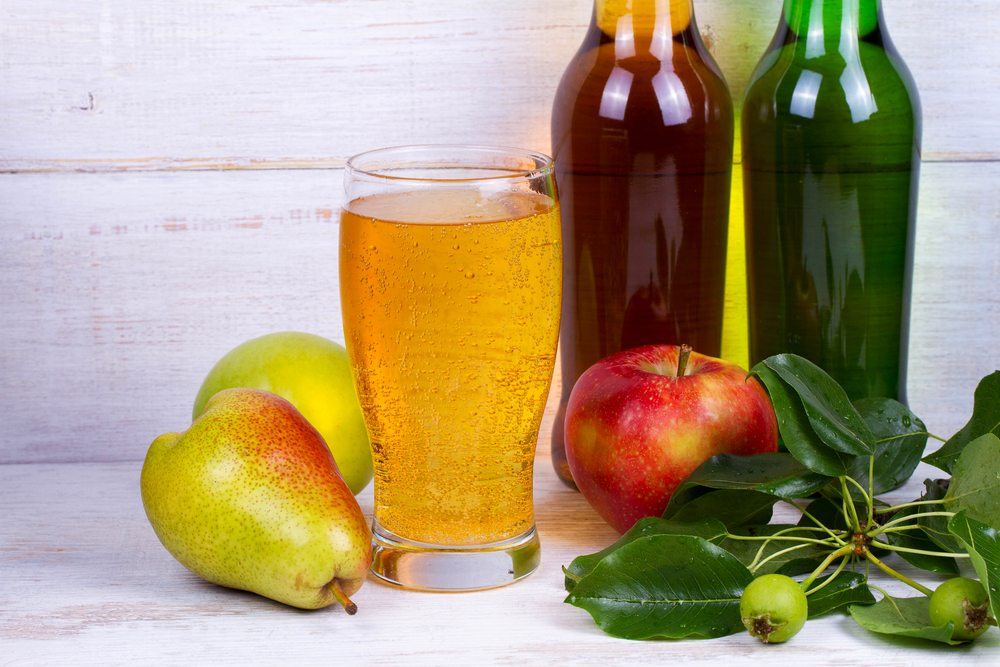
There is absolutely nothing in apple cider that contains gluten, so this is a pretty safe option. Additionally, there is little risk of cross-contamination, as many companies that produce cider do not use that same facility for anything else.
This is especially true for non-alcoholic cider. As always though, there are exceptions, so it’s always best to check online and on product labels to work out whether specific brands are actually gluten free. This is also true for other types of cider.
Cellophane Noodles

Pasta can be one frustrating thing about avoiding gluten – especially for those of us who are pasta lovers. Cellophane noodles are one good alternative. These noodles are made from starch, like the starch from mung beans or from potatoes.
You can find thick or thin examples of the noodles and there are even wide and flat versions, although these are less common. Cellophane noodles can be used in most recipes that would call for normal noodles, like stir-fries or soups.
Seaweed & Kelp

A challenging aspect of eating a gluten free diet is that meals often become repetitive and your options are very limited. Seaweed and kelp are alternatives that people often overlook, and they can be a great way of making dishes more interesting and more flavorful.
Even a simple seaweed salad (like the one in the image) can be a good option for a snack or a meal.
Nuts

Nuts are a great snack for any diet, especially a gluten free diet. One of their biggest advantages is that nuts are high in protein, making them a much more filling option for a snack.
However, while nuts themselves are gluten free, there is the risk for cross contamination and some of the flavorings on nuts may contain gluten. So, this is another example of a relatively safe food where you still have to do a little bit of checking.
Poultry

Both chicken and turkey are common sources of protein and great components of a meal. Because seasonings and sauces can often contain gluten, one of the best options is to get the poultry and season it yourself before cooking.
In particular, you want to keep an eye out for breaded or fried chicken, as flour is often used as an ingredient. There are many examples of gluten free spice mixes or marinades, as long as you do your research and look for the gluten free labels.
Cheese

Most cheese (and most dairy products in general, for that matter) is gluten free, as gluten-containing compounds are not used at any point during the production of cheese. There are exceptions though, such as blue cheese or cottage cheese.
Both of these types of cheeses can be made gluten free, but unless otherwise stated on their label there is a risk that the production process will involve gluten.
Shredded cheese is also something to be careful with, because flour-based ingredients will sometimes be used to prevent the cheese shreds from sticking together.
Overall, gourmet cheeses are good to go, and you can explore a world of flavor with hundreds of types of cheese out there. There’s more to life than just cheddar, mozzarella, and gouda!
Coconuts

As you might imagine, any product that is simply coconut is going to be gluten free, because coconut itself is directly from a plant and has nothing at all to do with gluten.
In fact, coconut flour is also sometimes touted as a gluten free alternative to regular flour and is made by pressing all of the oil and water out of the coconut meat and then grinding the end result up. This makes for an effective approach to gluten free baking, although (as always) it’s important to be aware of brands and whether there is a risk for cross contamination.
Corn

Corn is another pretty safe bet when it comes to gluten free food options. Even though corn is a grain like wheat is, it does not cause the same biological response because it does not contain gluten.
This makes corn especially appealing as an alternative grain to wheat, and you see it appear in a range of different products that are gluten free. Some people seem to experience similar responses to corn and to wheat, although this is rare and most people who cannot eat gluten can eat corn without any issues at all.
Eggs

If you’re concerned about gluten in your eggs – don’t be. Even though chickens (like many other animals) are fed wheat as part of their diet, this doesn’t mean that you end up eating the gluten compound.
Instead, that compound is broken down in the chicken and this makes eggs gluten free. Even so, eggs can easily be contaminated, especially during cooking. This means that you should be extra careful when eating eggs at a restaurant.
Vietnamese Spring Rolls
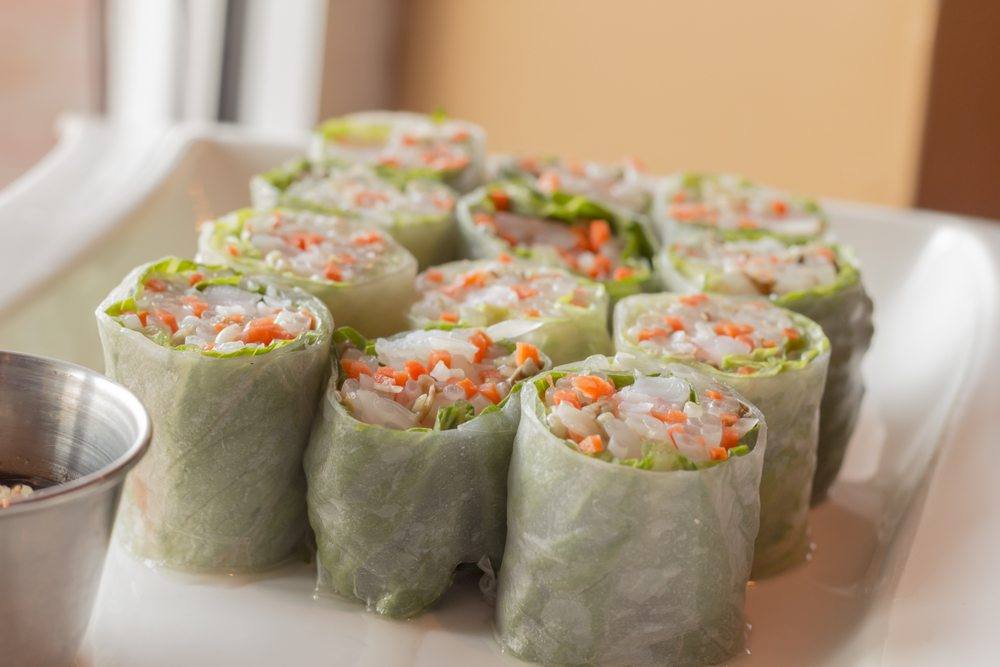
Asian foods are a really good option if you are trying to avoid gluten. Much of this cuisine is based on rice or soybeans, which can give you a lot of options. This is great – because Western cuisine is strongly based on wheat and that can make a gluten-free diet challenging.
Vietnamese spring rolls are one good example of a gluten free meal to true, as these rolls use a rice wrapper. Whether or not these are gluten free will depend on the specific ingredients and any sauces or seasonings. However, the traditional way of making them does tend to be gluten free.
Wine

Having a gluten intolerance or sensitivity means missing out on a lot of things, but thankfully wine isn’t one of them. Wine itself is made from fermented grapes and this process doesn’t traditionally make use of any gluten.
Nevertheless, gluten can make its way into wine through cross-contamination or even because wheat paste is used to seal the casks used for aging. Typically the amount of gluten in these cases won’t cause any ill effects, but people who are very sensitive to gluten may.
Related: red wine clubs / white wine clubs
Fish

A good rule of thumb for gluten is the less processed the better. When food hasn’t been processed there is much less chance that it will contain gluten, especially when you are dealing with a food that isn’t grain based.
As you might imagine, fish, like salmon, doesn’t contain gluten naturally and there are many different ways of cooking it that don’t use gluten. In fact, most herbs and spices don’t contain gluten, although you might want to steer away from anything that uses the general term seasoning, as this is more likely to have a gluten component.
Pork

Pork is another option for meals on a gluten free diet and pork is a good choice for protein. As with other cuts of meat, one thing to be aware of is where it was actually cut.
For example, meat cut at a butcher’s store can sometimes cause problems for people sensitive to gluten, as there can be cross contamination with meats that use a flour-based coating. As always, watch out for marinades and seasonings, as these can be hidden sources of gluten.
Buckwheat Noodles

Buckwheat noodles are another pasta alternative and a healthy one at that. The noodles offer a number of healthy nutrients, including calcium, magnesium and zinc, which makes them an especially good choice for health.
Don’t be fooled by the name of the noodles. They are made from buckwheat, which is a completely different grain than wheat and is one that doesn’t have any gluten. Checking the information on the product label is still a good idea, as some packaged varieties do contain wheat flour.
Beef

Of all the meats, beef is probably my favorite and it’s great that the red meat is a viable option for anyone on a gluten free diet. As with other meats, you don’t really have to worry about what the animal was fed because any gluten in its diet is going to be digested.
However, if you are concerned you can always look for grass-fed beef. This tends to be more expensive, but it is often considered healthier, which can make it worth the price.
Rice Pasta and Noodles

Any type of pasta based on rice is fantastic for a gluten free diet. This gives you the flexibility to make pasta-based dishes, without having to worry about the gluten in traditional pasta.
I love the way that this type of pasta lets you make food that seems more ‘normal’. That’s a particularly relevant option if you are trying to make gluten free food for your family.
Potatoes

The low-carb emphasis of modern diets has made potatoes out to be a villain, but they really aren’t. Instead, they have a lot of nutrients to offer and they are even relatively low in calories as long as you don’t load them up with cheese and sour cream.
Potatoes are especially relevant for gluten free eating because they are filling and a good addition to many meals. Plus, they can be prepared in a lot of different ways, so it takes a while to get sick of them.
Jello and Cool Whip

Processed foods are always more risky when it comes to gluten, but both jello and cool whip. In both cases the products do not use gluten containing ingredients. Additionally, Kraft has a policy to disclose any ingredients that contain gluten.
So, if you are choosing products from that brand, finding out whether or not there is any gluten is as simple as reading the labels. As always, there is a risk of cross contamination, which may affect people highly sensitive to gluten.
Tacos

Most tacos you find won’t be gluten free, but this is one conventional dish that you can make entirely gluten free without too much hassle.
For example, corn tortillas, lettuce, cheese, tomatoes and the meat are all gluten free, as is the rice that you might find in or alongside the taco. Many brands of taco sauce, taco seasoning and salsa are also gluten free, so you have lots of options with this dish.
Distilled Alcoholic Beverages

The distillation process of alcohol like tequila, gin, vodka and rum completely filters out gluten. This means that pretty much any type of spirit is going to be gluten free.
Whisky is a bit more of a sticky topic, because some brands and types are gluten free, while others tend not to be. The distillation process does remove the vast majority of the gluten, but people who are highly sensitive do sometimes have issues with whisky.
Hummus
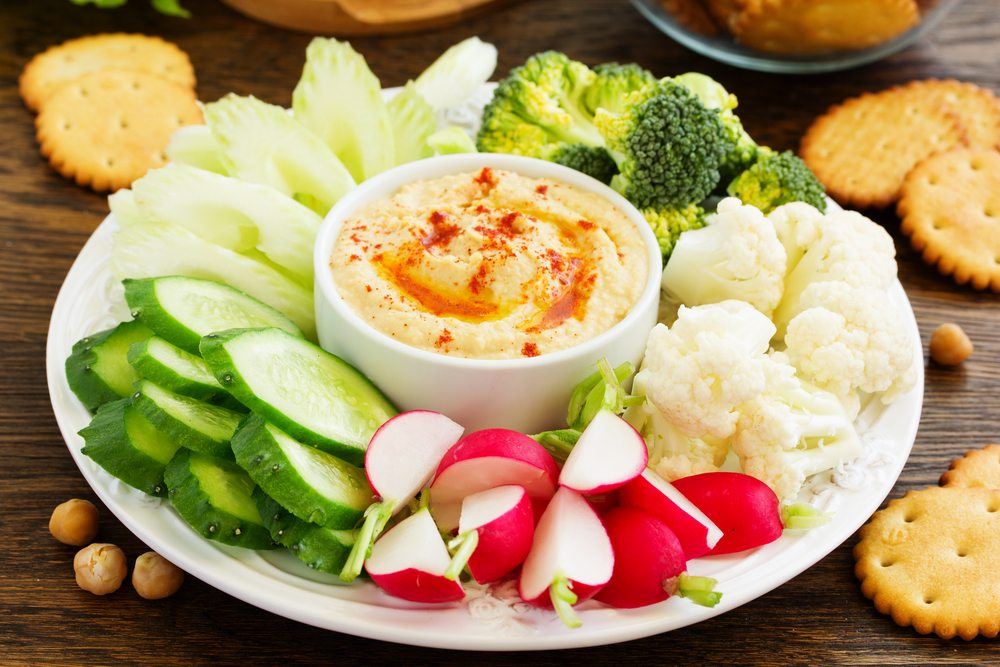
Hummus is traditionally gluten free, but some brands do add in flour to the recipe or produce it on equipment that might be contaminated with gluten. However, hummus is also exceptionally easy to make (it is basically mashed up chickpeas), so one of the best ways to be sure about whether it contains gluten is simply to make your own.
Making your own also lets you tweak the recipe to suit your own tastes. Personally, I add a lot of garlic when making hummus, but other people don’t really like the garlic flavor.
Tofu

Tofu is often promoted as a powerful protein source for vegetarians, but it’s also a good option for anyone trying to avoid gluten. Tofu itself is naturally gluten free, as it is made mainly from soybeans.
This is one product to be careful with though, as wheat and soybeans are often grown in the same fields or in fields that are close to one another. This can result in cross contamination. If you want to include tofu in a gluten free diet your best bet is to look for brands that regularly test their tofu for gluten and label it as gluten free.
Avacados

Soft, creamy and incredibly versatile, avocados are a fantastic ingredient to eat or to cook with.
They are also one of my absolute favorite fruits. In their natural state avocados are gluten free without a doubt, so this is one product where you don’t need to check labels or double-check what producers have to say.
Butter

At its most basic level butter is gluten free, as are most dairy products. However, it isn’t quite as simple as that, because many of the additives used in butter do contain gluten.
Because of this, butter is one product where you have to be very careful about. There are some brands of butter that are entirely gluten free, but you will need to do some shopping around. In general, it’s best to assume that butter isn’t gluten free until you can find a specific brand that works for you.
Rice

Rice might be a grain, but it isn’t a grain that contains gluten. This is the reason that products like rice noodles can be such a good alternative for people who have problems with gluten.
As long as you avoid rice blends that might contain barley or spices, rice is a pretty safe bet. If you don’t like the taste of plain rice, you can always flavor it yourself with seasonings that you know are gluten free.
Shellfish
Shellfish is another type of food that is naturally gluten free – which is fantastic. Most of the time you should be pretty safe eating them, but as with most seafood, it’s worth checking if you are going to eat them at a restaurant.
Some chefs treat shellfish in a way that you might not expect, which can lead to you ingesting some gluten. For example, scallops are often floured before they are cooked and the menu will often not say this.
Lentils

Lentils are naturally gluten free and offer considerable flavor and versatility in cooking. While plain lentils are a really good idea on a gluten free diet, prepackaged lentils are a different story.
Some of products may contain gluten directly, or may have been processed on machinery that also includes gluten. Despite this, it is worth taking the time to use plain lentils, because they offer significant nutritional benefits.
Milk
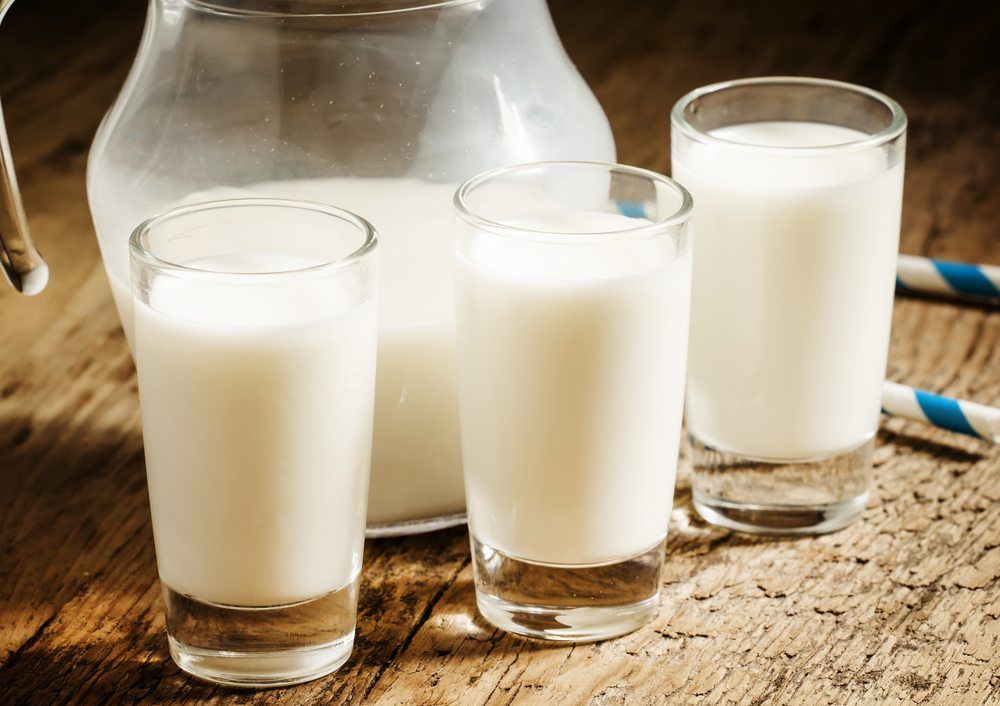
All milk is naturally free from gluten. This includes whole milk, 1%, 2% and skim milk. However, the same isn’t true for flavored milk. With flavored milk you have to check the ingredients label for the product. Because it is some of the additives in flavored milk that can contain gluten, you can find gluten free flavored milk – it’s just a matter of shopping around.
Buckwheat

Buckwheat tends to throw people off-track because of its name. But, buckwheat is actually a gluten free grain and it is an especially powerful wheat substitute.
Unlike wheat, buckwheat does have a relatively strong and distinctive taste, so it can take some getting used to. With buckwheat there is significant risk for contamination. However, many brands produce buckwheat and buckwheat products specifically for people who cannot eat gluten, so they take care to avoid and test for the presence of gluten.
Spices

Spices are an important component of any kitchen. Having a good variety of spices is especially important for gluten free eating, as spices can make food seem much more interesting. In general, any product that is a pure spice with nothing else added should be gluten free. The gluten status of mixes of spices is more varied.
One trick is to pay attention to brands, as some brands frequently contain gluten while others rarely do or are very upfront about their gluten. For example, Frontier Co-op and Spicely are might be pretty obscure brands, but they do focus on avoiding gluten in their products.
Mustard

As you might imagine, mustard seeds themselves tend to be gluten free. Despite this, there is a lot of variation in prepared mustard. French’s mustard, is entirely gluten free, but many other brands are not – so, be prepared for another exercise in reading labels.
Peas

Like most vegetables, peas are naturally gluten free. I find peas interesting, because they are pretty underappreciated as a vegetable. They might be something that you eat as a kid, but people often find that they stop eating peas as they grow up. However, meals like split pea soup can be a good way to get peas into your diet, and they are great gluten free option.
Olive Oil

Olive oil is popularized as an especially healthy choice for a wide range of reasons – and its gluten free nature is just one more reason to use the oil regularly. Olive oil has the advantage of minimal processing, which makes it especially relevant for avoiding gluten.
After all, the virgin and extra virgin versions are basically just the juice squeezed from olives. Blended olive oil or olive oil that also contains flavoring isn’t as safe and may contain gluten depending on the specific brand.
Horseradish

Horseradish is actually the root from a plant, so it does not naturally have any gluten in it. While the root itself is gluten free, few commercially prepared versions of horseradish sauce are labelled gluten free.
Some people choose to eat horseradish sauce anyway and work out for themselves which brands cause a reaction and which ones do not. You can also make horseradish sauce yourself. This is certainly the safest way to approach the issue of horseradish and you can make sure no gluten containing ingredients are included.
Quinoa, brown rice, kaniwa, amaranth, sorghum, millet, buckwheat, teff
All of these are alternative types of grains that can be used in cooking in a wide range of ways. They have started to become more popular in recent years, but historically many alternative grains have been overlooked.
Personally I love quinoa, even though I don’t have issues with gluten, and I have tried around half of the items in this list. Regardless of whether you are avoiding gluten, including a range of natural items in your diet is a great way to potentially improve health and get more nutrients.
Oats

Naturally oats are gluten free. However, of all the products on this list, oats are one that is most likely to be contaminated by wheat. In particular, fields of wheat and oats are often grown near one another and they may also be processed on the same machinery.
Nevertheless, some companies produce gluten free oats, and these are the best option to make sure you avoid gluten.














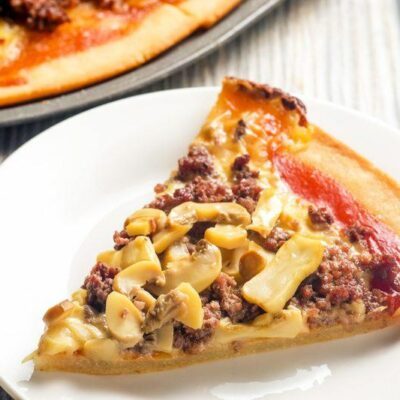


 31 Gluten-Free Pizza Crust Recipes, Because Everyone Likes Pizza
31 Gluten-Free Pizza Crust Recipes, Because Everyone Likes Pizza
Very helpful website. Thank you very much.
Great intro to gluten free..i do not have gluten intolerance, however as an O.A.P. who has suffers lots of physical acidents due to an adventure’ res..life style, broken bones ECT, I am aware that arthritis will be round the corner if i don’t take steps to avoid food that exacerbates inflammation to joints and organs .and refuse to take pharmaceutical pain killers…